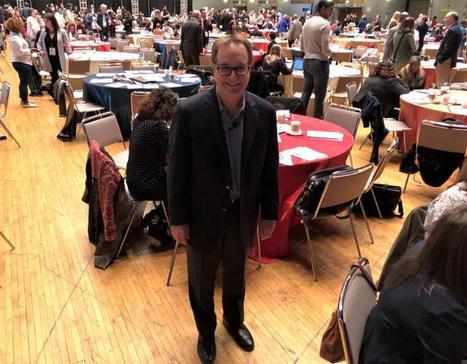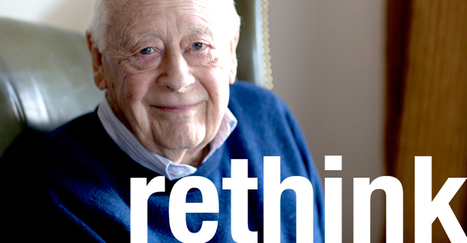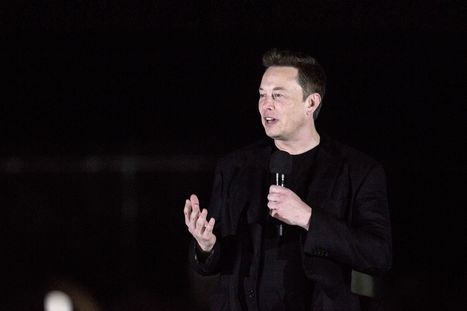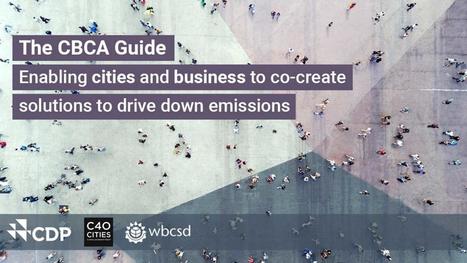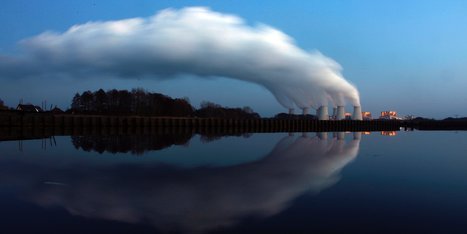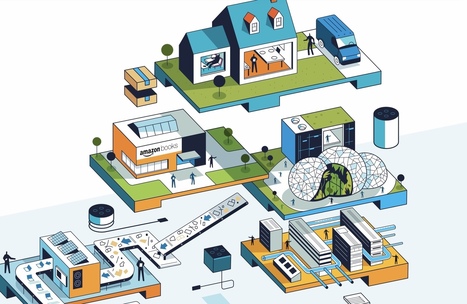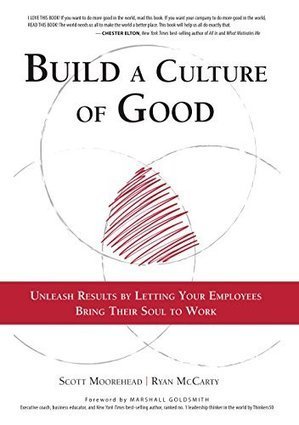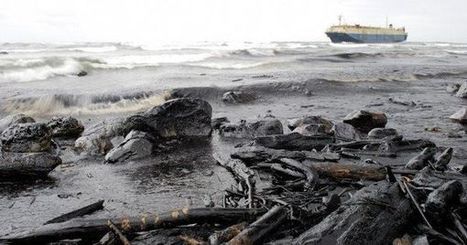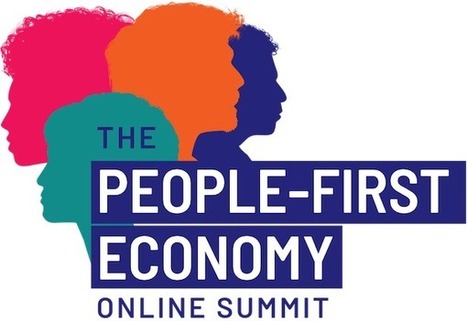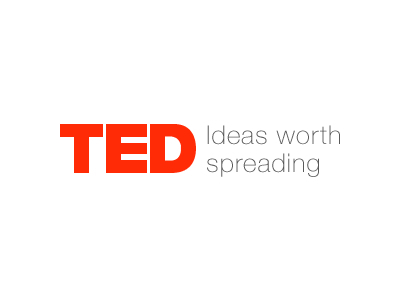Cleveland’s greatest export may not be world-class healthcare, auto parts, or even LeBron James, it might be a management philosophy. Appreciative Inquiry
Follow, research and publish the best content
Get Started for FREE
Sign up with Facebook Sign up with X
I don't have a Facebook or a X account
Already have an account: Login

Business as an Agent of World Benefit
33.4K views |
+0 today
Follow
Filter by date
Tags
Sustainable design; green economy; csr; sustainable development; Business as an Agent of World Benefit; Appreciative Inquiry; David Cooperrider; CSR, flourishing enterprise, generative economy
Curated by
David Cooperrider & Audrey Selian
 Your new post is loading... Your new post is loading...
 Your new post is loading... Your new post is loading...
David Cooperrider & Audrey Selian 's insight:
The business philosopher Charles Handy, a little more than a year ago, called for a business reformation--a revolution really. He used to think that the answer to building more fully human organizations--businesses that also nurture life and nature--might be a charter for humanity to be used as a guide to organization.
But what we really need he argued is a transformational business reformation. We need to rethink how organizations, particularly businesses, are actually run, why they are run, and what their purpose and role are in society. We need to figure out how to keep human values intact inside the corporation and how business enriches, nourishes, and replenishes society and ecosystems . And if that seems ambitious, consider, says Handy, the achievement of Martin Luther – one person on his own. And not just Luther. In 1970 Milton Friedman took it on himself to announce that the only purpose of a business was to make a profit. That’s how, argues Handy, we arrived at shareholder value (a phrase previously unknown), followed by agency theory, the idea of a corporation as a nexus of contracts, and stock options, eventually legalized by Congress. And now, a swamp of buyback shares, trillions of dollars going into the private equities of some of the senior managers. This too was a revolution – an unwelcome one, but a revolution nonetheless.. So where do we find another leader? One who will lead our reformation? Well, says Handy: "Let me follow another Martin Luther and share a dream. Couldn’t the modern Wittenberg be the Peter Drucker Global Forum? And the Luther of our time be Peter Drucker? With his words from the grave magnified … by all of us. And exemplified by putting our words into practice. If people criticize, we have to be bold, like Luther, and say: here I stand, I can do no other, because this is the right way to behave. So don’t ask for leaders. It’s up to us to start small fires in the darkness, until they spread and the whole world is alight with a better vision of what we could do with our businesses. If not us, then who? if not now, then when?" 
David Cooperrider & Audrey Selian 's curator insight,
November 27, 2019 3:37 PM
The great business philosopher Charles Handy, a little more than a year ago, called for a business reformation--a revolution really. He used to think that the answer to building more fully human organizations--businesses that also nurture life and nature--might be a charter for humanity to be used as a guide to organization. But what we really need he argued is a transformational business reformation.
We need to rethink how organizations, particularly businesses, are actually run, why they are run, and what their purpose and role are in society. We need to figure out how to keep human values intact inside the corporation and how business enriches, nourishes, and replenishes society and ecosystems . And if that seems ambitious, consider the achievement of Martin Luther – one person on his own. And not just Luther. In 1970 Milton Friedman took it on himself to announce that the only purpose of a business was to make a profit. That’s how, argues Handy, we arrived at shareholder value (a phrase previously unknown), followed by agency theory, the idea of a corporation as a nexus of contracts, and stock options, eventually legalized by Congress. And now, a swamp of buyback shares, trillions of dollars going into the private equities of some of the senior managers. This too was a revolution – an unwelcome one, but a revolution nonetheless.. So where do we find another leader? One who will lead our reformation? Well, says Handy: "Let me follow another Martin Luther and share a dream. Couldn’t the modern Wittenberg be the Peter Drucker Global Forum? And the Luther of our time be Peter Drucker? With his words from the grave magnified … by all of us. And exemplified by putting our words into practice. If people criticize, we have to be bold, like Luther, and say: here I stand, I can do no other, because this is the right way to behave. So don’t ask for leaders. It’s up to us to start small fires in the darkness, until they spread and the whole world is alight with a better vision of what we could do with our businesses. If not us, then who? if not now, then when?"
Love him or hate him, here are three branding lessons every executive can learn from Elon Musk.
David Cooperrider & Audrey Selian 's insight:
Like him or not, the polarizing founder of Tesla has successfully demonstrated what we call "the corporation as a cause" and an agent of change--in this case industry and world change. Purpose driven companies are magnets: they are magnets for investors; they are able to rally employees; they are able to grab new business opportunities and even react to crises more efficiently. If you want to look at how tomorrow's companies organize, strategize, and compete just look at companies that summon extraordinary contribution from their people and win the hearts and minds of whole communities of stakeholders ready to join a mass movement. One of Elon Musk's leadership qualities is that he knows that big brands are magnets too for critics--and instead of running away he runs toward them. This article shares one moment where Musk made a widely publicized apology and the headlines range loud saying "this was the most valuable apology ever made." But what's most defining about Musk's leadership is that he knows the corporation of the future is not a dispassionate engine of commerce. For him the corporation as a cause fires people's imaginations and allows him to define success on a very big scale. Musk justifies nearly every business decision by referencing his "mission of accelerating the advent of sustainable transport and energy, which is important for all life on Earth." Even if it's in the form of a memo discussing employee cuts sent in the middle of the night, Musk is always reiterating that his primary focus is the relentless pursuit of developing technology that best serves humanity. Let's call it purpose with an attitude. Others call it strategy as advocacy. Today it's not enough to be different--a company needs to be different by making a difference, championing betterment, transformation, and breaking the mold. Love him or hate him" says this article "there are three branding lessons every executive can learn from Elon Musk."
David Cooperrider & Audrey Selian 's insight:
Systemic change happens in bigger, braver, and bolder ways through tri-sectoral partnerships--the kind of win-win-win partnerships that create stronger businesses, better public service, and non-profit and community action. The World Business Council for Sustainable Development (WBCSD) joined forces with C40 Cities and CDP at the C40 World Mayors Summit last month in Copenhagen, to launch the City-Business Climate Alliance (CBCA).
WBCSD is a global, CEO-led organization of over 200 leading businesses working together to accelerate the transition to a sustainable world. The coalition represents $ 8.5 trillion (US) in annual revenues. In this new alliance, C40 Cities, CDP and WBCSD have joined forces to accelerate climate action and support cities and businesses to translate their global climate commitments into practical actions. You can watch the launch video here, or read the press release. The CBCA was announced in a speech by the Mayor of Toronto, John Tory. The Alliance provides a model for how city governments and businesses across the world can break down barriers to cooperation and collaboration. It connects cities and business to a global network of successful city-business partnerships, enabling peer-to-peer learning, and it supports cities at the local level to set-up new partnerships.
The group of 130 banks include Deutsche Bank, Citigroup, and Barclays, and represent a third of the global industry.
David Cooperrider & Audrey Selian 's insight:
Banks with more than $47 trillion in assets, or a third of the global industry, adopted new U.N.-backed "responsible banking" principles to fight climate change on Sunday that will increasingly shift their loan books away from fossil fuels. Deutsche Bank, Citigroup, and Barclays, were among 130 banks to join the new framework on the eve of a United Nations summit in New York aimed at pushing companies and governments to act quickly to avert catastrophic global warming. The principles will be used by the banks to pivot their loan portfolios away from carbon-intensive assets and redirect capital to greener industries.
If this seems like a bombshell or a surprise it's really not. According to Jeremy Rifkin the real bombshell happened in 2015, when Citigroup sent shockwaves through the energy industry and the global economy by predicting $ 100 trillion in stranded fossil fuel assets if the Paris Climate Summit succeeded in helping to limit global warming by 2 ° C. The mention of $100 trillion in stranded fossil fuel assets caught the attention of the global business community. Stranded assets are assets that have been prematurely written down before their expected life cycle runs its normal course. Stranded assets are part of the normal day-to-day operations of the market. But occasionally, an entire class of assets can suddenly and unexpectedly become stranded. This generally happens when a revolutionary new class of technologies and accompanying infrastructure platforms suddenly enter the marketplace, producing what Joseph Schumpeter termed “creative destruction,” The thing to bear in mind, said Rifkin, "is that the collapse of the fossil fuel civilization is inevitable, despite any efforts by the fossil fuel industries to forestall it. Market forces are far more powerful than whatever lobbying maneuvers the fossil fuel industry might entertain. This, too, might be difficult to hear for those activists still wedded to the idea that the market is never on the side of the people. I am certainly aware that this is often the case, and for a lifetime I have been critical of various aspects of market capitalism. This time, however, and with this disruption, the market is a guardian angel looking over humanity. But the invisible hand alone will not steer us into the Age of Resilience. Building a new ecological civilization from the ashes will require a far more collective response that marshals our public capital, market capital, and social capital at every level of governance and engages the deep participation of the entire body politic. We have reached an inflection point where, in some cases, it is more cost-effective to build and operate new alternative energy projects than to maintain existing conventional generation plants. Currently, power and utility companies are quietly buying long-term power generation contracts for solar for as little as 2.42 cents a kilowatt-hour. And according to a 2019 report released by the International Renewable Energy Agency (IRENA), onshore wind is being generated at as low as 3 to 4 cents per kilowatt-hour, with no end in sight in terms of the exponentially falling cost of generating the new green energies." Finally, in his book The Green New Deal, Rifkin points out one of nature's great truths.: "The impact on society of near-zero marginal cost solar and wind energy is all the more pronounced when we consider the enormous potential of these energy sources. The sun beams 470 exajoules of energy to Earth every eighty-eight minutes—equaling the amount of energy human beings use in a year. If we could grab hold of one-tenth of 1 percent of the sun’s energy that reaches Earth, it would give us six times the energy we now use across the global economy."
Bold steps from big companies are needed in order to boost the development of new technologies and industries that will support a low carbon economy, believes Christiana Figueres, the UN’s former climate change chief and founding partner of Global Optimism. “If Amazon can set ambitious goals like this and make significant changes at their scale, we think many more companies should be able to do the same and will accept the challenge,” she says.
David Cooperrider & Audrey Selian 's insight:
Jeff Bezos is going to realize that his bold decision today will set in motion tremendous innovation that will propel better operations at a whole magnitude better than any kind of LEAN management or six sigma initiative.
Amazon has announced a commitment to be net zero carbon across its businesses by 2040; if successful, the ecommerce giant will meet the Paris Agreement 10 years early. Founder and CEO Jeff Bezos says the company is “done being in the middle of the herd on this issue” and plans to use its size and scale to “make a difference.” Jeff Bezos is right too...not only can every company do it, but its the future of management and either you are a laggard--adopting a strategic point of view to simply keep up--or take the alternative strategy and lead. And Bezos believes all of this is here to stay as a mandate for any business wishing to thrive in this age of business revolution. He states: “If a company with as much physical infrastructure as Amazon – which delivers more than 10 billion items a year – can meet the Paris Agreement 10 years early, then any company can,” Bezos says. “I’ve been talking with other CEOs of global companies, and I’m finding a lot of interest in joining the pledge. Large companies signing The Climate Pledge will send an important signal to the market that it’s time to invest in the products and services the signatories will need to meet their commitments.” As this article describes "Amazon has launched a new sustainability website to report on its commitments. The site includes information on Amazon’s carbon footprint and other sustainability metrics that share the progress the company is making towards reaching The Climate Pledge. Bold steps from big companies are needed in order to boost the development of new technologies and industries that will support a low carbon economy, believes Christiana Figueres, the UN’s former climate change chief and founding partner of Global Optimism. “If Amazon can set ambitious goals like this and make significant changes at their scale, we think many more companies should be able to do the same and will accept the challenge,” she says. Amazon’s announcement comes a day before the company is expected to lose hundreds of members of its workforce when employees walk out as part of the youth-driven Global Climate Strike. Employees planning to take part in the walkout say they want Amazon to reach zero emissions by 2030, use electric delivery vehicles, and end contracts with fossil fuel companies that use its technology products. Two years ago, Amazon made a long-term commitment to power its global infrastructure with 100% renewable energy. Amazon is now pledging to reach 80% renewable energy by 2024 and 100% renewable energy by 2030. Major investments in renewable energy are a critical step to address its carbon footprint globally. To date, Amazon has launched 15 utility-scale wind and solar renewable energy projects that will generate over 1,300 MW of renewable capacity and deliver more than 3.8 million MWh of clean energy annually."
Build A Culture of Good: Unleash Results by Letting Your Employees Bring Their Soul to Work -
David Cooperrider & Audrey Selian 's insight:
How much value does your leadership team place on business as an agent of world benefit? What would happen to your bottom line if employees cared not only about their paychecks while at work but also about customers, supporting their community--and being part of the business revolution for good? Scott Moorehead is a coauthor of "Build A Culture of Good: Unleash Results by Letting Your Employees Bring Their Soul to Work".... . He's also the CEO of Round Room, a third-generation, family-owned business based in the United States. The company is an owner and investor in multiple wireless businesses and retail stores in the United States. Through its subsidiaries, Round Room employs more than 2,300 people.
"As an owner, as a president and CEO of a company that was growing quite quickly, I was becoming frustrated with the level of engagement of our employees," Moorehead says. Then he realized that people want to make a larger difference and that dignified work--placing purpose before or as a generative force for profit--has what we've written about as a "mirror flourishing" affect. He concludes with a question? What's the fastest way to build a culture of high engagement--where people bring their best selves to the workplace, where innovation is arising from everywhere, and where people work better with one another? His answer: Build a Culture of Good, where everyone can bring their soul to work. What i like is that this is not some academic voice, but the CEO voice, and it's the voice of the high performing organization of tomorrow.
superior ESG performance is directly correlated to stronger financial performance.
David Cooperrider & Audrey Selian 's insight:
We must all recognize the power of our investable dollars to accelerate the transition to a just and sustainable global economy that ensures a livable planet for all of us. And the returns of investing with ESG (environmental, social and governance) issues in mind is good investing. Superior ESG performance is no longer a sideline issue; it is directly correlated to stronger financial performance according to reports by CERES on the anniversary of their 30 year.
The Ceres Investor Network includes over 170 institutional investors, managing more than $26 trillion in assets, advancing leading investment practices, corporate engagement strategies, and key policy and regulatory solutions. Some of our key investor coalitions and initiatives include the Global Investor Coalition on Climate Change, Climate Action 100+ and The Investor Agenda.
The financial firm behind the "Fearless Girl" statue in Manhattan's Financial District has just issued the results of its gender equity initiatives.
David Cooperrider & Audrey Selian 's insight:
Every day there are major new studies that demonstrate how advancing the world's 17 Sustainable Development Goals--and harnessing them to ignite innovation--will help create superior corporate performance.
One of those goals is gender equality and its target to "ensure women’s full and effective participation and equal opportunities for leadership at all levels of decision-making in political, economic and public life." Consider this initiative:Its called Fearless Girl and its the brainchild of the world's 3rd largest asset manager. State Street Global Advisors (SSGA), yes, the world’s third largest asset manager, commissioned the Fearless Girl piece of artwork in Manhattan's Financial District as a symbol for their initiative to bring more women to leadership roles, especially on corporate boards. Two years later, the financial firm has outlined the results of its initiative in its 2019 Annual Stewardship Report. As this Triple Pundit article states "The report doesn’t only quiet skeptics that would assume the statue was an empty corporate ploy; it also shows that investment firms can make a tangible difference with their voice and voting power. In 2017, SSGA reached out to 1,357 companies — amounting to about 70 percent of the equity assets the firm manages — that lacked female representation on their corporate boards. As of June 30, 43 percent of those companies have added a female director. That amounts to 577 companies. Six more have committed to doing the same. Was the statement behind Fearless Girl enough to move the needle? State Street did more than install an inspiring statue to achieve these results. They had to engage the chosen companies in conversations, and when necessary, vote against the chair of businesses that did not taken adequate action to add a female board member. The firm has taken voting action against 667 companies thus far. “Unlike their active manager colleagues, index portfolio managers don’t have the luxury of selling companies they think are adding risk to the portfolio,” Rakhi Kumar, Senior Managing Director and Head of ESG Investments and Asset Stewardship, says in a 2018 State Street article. “If a company is in the index, we own it. So our job is to identify areas of concern or opportunity, and help companies to act on them.” Kumar added, “We do that through a constructive engagement process: When companies fail to take action we will use our proxy voting power to bring about change.” Most conversations with companies have been positive, according to Kumar, but some took a turn for the worse. She recalls a company leader saying, “So you want a woman? We’ll give you a woman.” The company didn’t comprehend the bigger picture — that diverse perspectives are important, even essential for 21st century business. Moreover, the benefits of diversity to business are well documented. A McKinsey Study found that companies with more gender diverse executive teams outperformed their competitors by 21 percent in profitability and by 27 percent in value creation. And companies that opted out of diversity were 29 percent less likely to achieve above-average profitability. State Street has been nuanced in its engagement with its companies, beginning by understanding how the companies view diversity and whether they are open to having a conversation. If a company shows it is open, the investment firm proceeds with the company’s data — what they collect and how they are using it."
Free 10 day workshop to transform your organization with people-first practices to create a more equitable economy and a healthier planet
David Cooperrider & Audrey Selian 's insight:
When organizations wake up to understand their connection to their employees, communities, customers and the planet, they can reach new heights of purpose, innovation, and profit. That's what Raj Sisodia has observed in his work in conscious capitalism and now this, The People First Economy. It is an online conference--and it is free-- with a host of great speakers and companies represented.
The E+E 100 are the VPs, directors, managers and engineers who are making significant strides in driving our industry. See the complete list here or download the report for more detailed information about these leaders. And stay tuned for the Call for Submissions coming in the fall, when you can nominate your favorite sustainability or energy management professional!
David Cooperrider & Audrey Selian 's insight:
Environmental Leader Magazine awards the top 100 best business leaders each year--people building positive business that is good for business and good for the world.
Inspire People to Build a Better Working World Meet Susan Hunt Stevens, CEO of a platform called WeSpire. Her mission: Inspire People to Build a Better Working World Her work builds on the positive psychology of human strengths and the idea of what we've written about as "the discovery and design of positive institutions" that is, businesses that elevate our highest human strengths, connect and magnify and multiply those strengths, and ultimately bring our highest human strengths to building a better world (cooperrider and godwin, 2012.) Susan Stevens has written: We believe that innovative technology and great content can motivate people to make positive choices. As they take action, they inspire others to do the same, making the places they work and live stronger and better. Source: The U.S. workforce has made it clear that they are looking to find work that gives them a sense of purpose and that they can feel passionate about. Organizations are responding by providing more employee engagement programs and positive impact opportunities ‘ but does this make them a positive business? Defining Positive Business a couple of weeks ago we dissected what purpose means in the workplace. Today we’re investigating the idea of a positive business. The University of Michigan’s Ross School of Business defines positive business as the idea that businesses can and should create not just economic value, but also offer great places to work, be good neighbors, and help solve some of the world’s biggest challenges. The Elements of Positive Business: Create Economic Value: A positive business is one that creates value and can continue to develop products and services that make a positive impact on society. In order to create economic value, businesses need to think long term and determine how they can continue to be a financially sustainable business. Great Place to Work: Top talent seeks a workplace where they can make make a difference and feel they and their work is valued. Positive businesses are able to identify these people, and help them apply their passions and skills to the work that they’re doing. Be Good Neighbors: It can be easy to evaluate the success of a company based solely on their financial performance, but positive businesses realize that there’s much more to it. A large corporation can provide thousands of jobs to a region and its resources can be used to make a huge impact on its surrounding area. Through CSR, volunteering, philanthropy, environmental sustainability efforts and more, positive businesses can be a force for good. Solve the World’s Biggest Challenges: This can seem overwhelming, but it all goes back to a business’ mission and purpose. What is the problem they’re trying to solve? Why were they founded in the first place? When employees are entrenched in their day to day responsibilities, it can be hard to see the forest for the trees. Positive businesses put the challenge first as a reminder to all employees of the problem they are working to solve.
Harvard Business School professor and strategy guru Michael Porter made a compelling argument for business as a force for social change at TED Global in 2013. The business world was paying attention.
David Cooperrider & Audrey Selian 's insight:
Why do we turn to nonprofits, NGOs and governments to solve society's biggest problems? Michael Porter admits he's biased, as a business school professor, but he wants you to hear his case for letting business try to solve massive problems like climate change and access to water.
Why? Because when business solves a problem, it makes a profit — which lets that solution grow. In this talk Michael Porter explores all of this and the changing role of business and society. He argues that the huge social and environmental challenges—think about any of the 17 sustainable development goals—are calling for much more speed. Here are some excerpts from his talk: “The honest reality is we're not making fast enough progress. We're not winning. These problems still seem very daunting and very intractable, and any solutions we're achieving are small solutions. We're making incremental progress. What's the fundamental problem we have in dealing with these social problems? If we cut all the complexity away, we have the problem of scale. We can't scale. We can make progress. We can show benefits. We can show results. We can make things better. We're helping. We're doing better. We're doing good. We can't scale. We can't make a large-scale impact on these problems. Why is that? Because we don't have the resources. And that's really clear now. And that's clearer now than it's been for decades. There's simply not enough money to deal with any of these problems at scale using the current model. There's not enough tax revenue, there's not enough philanthropic donations, to deal with these problems the way we're dealing with them now. We've got to confront that reality. And the scarcity of resources for dealing with these problems is only growing, certainly in the advanced world today, with all the fiscal problems we face. So, if it's fundamentally a resource problem, where are the resources in society? How are those resources really created, the resources we're going to need to deal with all these societal challenges? Well there, I think the answer is very clear: They're in business. All wealth is actually created by business. Business creates wealth when it meets needs at a profit. That's how all wealth is created. It is meeting needs at a profit that leads to taxes and that leads to incomes and that leads to charitable donations. That's where all the resources come from. Only business can actually create resources. Other institutions can utilize them to do important work, but only business can create them. And business creates them when it's able to meet a need at a profit. The resources are overwhelmingly generated by business. The question then is, how do we tap into this? How do we tap into this? Business generates those resources when it makes a profit. That profit is that small difference between the price and the cost it takes to produce whatever solution business has created to whatever problem they're trying to solve. But that profit is the magic. Why? Because that profit allows whatever solution we've created to be infinitely scalable. Because if we can make a profit, we can do it for 10, 100, a million, 100 million, a billion. The solution becomes self-sustaining. T hat's what business does when it makes a profit. Now what does this all have to do with social problems? Well, one line of thinking is, let's take this profit and redeploy it into social problems. Business should give more. Business should be more responsible. And that's been the path that we've been on in business. But again, this path that we've been on is not getting us where we need to go. Now, I started out as a strategy professor, and I'm still a strategy professor. I'm proud of that. But I've also, over the years, worked more and more on social issues. I've worked on healthcare, the environment, economic development, reducing poverty, and as I worked more and more in the social field, I started seeing something that had a profound impact on me and my whole life, in a way. The conventional wisdom in economics and the view in business has historically been that actually, there's a tradeoff between social performance and economic performance. The conventional wisdom has been that business actually makes a profit by causing a social problem. The classic example is pollution. If business pollutes, it makes more money than if it tried to reduce that pollution. Reducing pollution is expensive, therefore businesses don't want to do it. It's profitable to have an unsafe working environment. It's too expensive to have a safe working environment, therefore business makes more money if they don't have a safe working environment. That's been the conventional wisdom. A lot of companies have fallen into that conventional wisdom. They resisted environmental improvement. They resisted workplace improvement. That thinking has led to, I think, much of the behavior that we have come to criticize in business, that I come to criticize in business. But the more deeply I got into all these social issues, one after another, and actually, the more I tried to address them myself, personally, in a few cases, through nonprofits that I was involved with, the more I found actually that the reality is the opposite. Business does not profit from causing social problems, actually not in any fundamental sense. That's a very simplistic view. The deeper we get into these issues, the more we start to understand that actually business profits from solving from social problems. That's where the real profit comes. Let's take pollution. We've learned today that actually reducing pollution and emissions is generating profit. It saves money. It makes the business more productive and efficient. It doesn't waste resources. Having a safer working environment actually, and avoiding accidents, it makes the business more profitable, because it's a sign of good processes. Accidents are expensive and costly. Issue by issue by issue, we start to learn that actually there's no trade-off between social progress and economic efficiency in any fundamental sense. Another issue is health. I mean, what we've found is actually health of employees is something that business should treasure, because that health allows those employees to be more productive and come to work and not be absent. The deeper work, the new work, the new thinking on the interface between business and social problems is actually showing that there's a fundamental, deep synergy, particularly if you're not thinking in the very short run. In the very short run, you can sometimes fool yourself into thinking that there's fundamentally opposing goals, but in the long run, ultimately, we're learning in field after field that this is simply not true. So how could we tap into the power of business to address the fundamental problems that we face? Imagine if we could do that, because if we could do it, we could scale. We could tap into this enormous resource pool and this organizational capacity. And guess what? That's happening now, finally, partly because of people like you who have raised these issues now for year after year and decade after decade. ... There's a fundamental opportunity for business today to impact and address these social problems, and this opportunity is the largest business opportunity we see in business. And the question is, how can we get business thinking to adapt this issue of shared value? This is what I call shared value: addressing a social issue with a business model. That's shared value. Shared value is capitalism, but it's a higher kind of capitalism. It's capitalism as it was ultimately meant to be, meeting important needs, not incrementally competing for trivial differences in product attributes and market share. Shared value is when we can create social value and economic value simultaneously. It's finding those opportunities that will unleash the greatest possibility we have to actually address these social problems because we can scale. We can address shared value at multiple levels. It's real. It's happening. But in order to get this solution working, we have to now change how business sees itself, and this is thankfully underway. Businesses got trapped into the conventional wisdom that they shouldn't worry about social problems, that this was sort of something on the side, that somebody else was doing it. We're now seeing companies all over the world embrace this idea." See also the Cooperrider and Selian Scoop It Post from August 26th, 2019...just a few days ago.
Elis and Signe Olsson Professor R. Edward Freeman speaks to an executive audience about the role of business in society. He explains the flaws o
David Cooperrider & Audrey Selian 's insight:
"Last week we saw a fringe idea go mainstream"--see https://kylewestaway.com/project/weekend-briefing/)
The Business Roundtable made a significant announcement on the Purpose of the corporation and how the purpose is not simply shareholder profitability but helping to make society and the world better. R Edward Freeman proposed the "stakeholder" theory of the firm many years ago (see video) and today – 64% of Americans say that a company’s “primary purpose” should include “making the world better” the same percentage that say it should include “making money for shareholders.” Millennials who are looking for lives of meaning, purpose, and value, in particular, may be driving the change more than anyone—and, more important, they’re choosing to work at companies that are driving change too. Among those ages 25 to 34 in the Fortune/NP Strategy poll, 80% say they want to work for “engaged companies.” Well last week CEOs such as Jamie Dimon full throttle agreed. The Business Roundtable exclusively represents chief executive officers (CEOs) of America’s leading companies. These CEO members lead companies with more than 15 million employees and more than $7 trillion in annual revenues. Kyle Westaway in his weekend briefing traces the history of all this--including his work on The Purpose Imperative--and now we see the CEOs of 100s of the worlds largest corporations making a declaration that Purpose and Profit must be fused, not only for the health and prosperity of the business, but also the planet and the best parts of capitalism itself. When society changes its mind, business leaders must listen. Doing good and doing well is no longer a fringe idea but a business leadership imperative. Kyle Westaway reminds us of a quote from Gandhi: "First they ignore you, then they laugh at you, then they fight you, then you win." The idea that companies should benefit society is as old as capitalism (see https://qz.com/work/1188731/the-idea-that-companies-should-benefit-society-is-as-old-as-capitalism/) but today we live in a new context, for example, industry leading stars such as Unilever and Novartis are demonstrating how addressing the 17 global goals can inspire corporate efficiencies, new products that are not just goods but betters, can open blue ocean market spaces, and create collaborative relationships for systemic change. Also see: https://www.businessroundtable.org/business-roundtable-redefines-the-purpose-of-a-corporation-to-promote-an-economy-that-serves-all-americans...here is an excerpt: Since 1978, Business Roundtable has periodically issued Principles of Corporate Governance. Each version of the document issued since 1997 has endorsed principles of shareholder primacy – that corporations exist principally to serve shareholders. With last week's announcement, the new Statement supersedes previous statements and outlines a modern standard for corporate responsibility. “The American dream is alive, but fraying,” said Jamie Dimon, Chairman and CEO of JPMorgan Chase & Co. and Chairman of Business Roundtable. “Major employers are investing in their workers and communities because they know it is the only way to be successful over the long term. These modernized principles reflect the business community’s unwavering commitment to continue to push for an economy that serves all Americans.” “This new statement better reflects the way corporations can and should operate today,” added Alex Gorsky, Chairman of the Board and Chief Executive Officer of Johnson & Johnson and Chair of the Business Roundtable Corporate Governance Committee. “It affirms the essential role corporations can play in improving our society when CEOs are truly committed to meeting the needs of all stakeholders.” Industry leaders also lent their support for the updated Business Roundtable Statement, citing the positive impact this commitment will have on long-term value creation: “I welcome this thoughtful statement by Business Roundtable CEOs on the Purpose of a Corporation. By taking a broader, more complete view of corporate purpose, boards can focus on creating long-term value, better serving everyone – investors, employees, communities, suppliers and customers,” said Bill McNabb, former CEO of Vanguard. “CEOs work to generate profits and return value to shareholders, but the best-run companies do more. They put the customer first and invest in their employees and communities. In the end, it’s the most promising way to build long-term value,” said Tricia Griffith, President and CEO of Progressive Corporation. “This is tremendous news because it is more critical than ever that businesses in the 21st century are focused on generating long-term value for all stakeholders and addressing the challenges we face, which will result in shared prosperity and sustainability for both business and society,” said Darren Walker, President of the Ford Foundation. |
President Trump’s decision to actually pull out of the Paris Agreement will hurt the economy, business, people, and the planet.
David Cooperrider & Audrey Selian 's insight:
Walmart is one of over 3,800 American businesses, states, cities and other entities that have joined together in the coalition "We Are Still In" to continue our efforts to reduce greenhouse gas emissions to meet the social, ecological, and economic empowerment goals of the Paris Agreement. These companies believe that Trump's decision to actually pull out of the Paris Agreement will severely hurt the economy, the planet, and the future value-creation and innovation potentials of these companies. And it is an impressive group. Together, these entities represent nearly 70 percent of the USA's gross domestic product and two-thirds of its population. If this group--these businesses, cities, and states-- were a country, it would be the world’s second-largest economy — behind the United States but ahead of China.
These are fast-changing times. Old certainties are collapsing around us and people are scrambling for new ways of being in the world. Especially in business, leaders increasingly want to be part of the solution revolution--and not be caught in the old Friedman doctrine "that the only business of business is business." Pitting high purpose business as something quite the opposite of profit, and government collaboration as something antithetical to economic innovation--and where only binary choices areas offered between capitalism and socialism--causes standoffs instead of creativity. These old ‘isms soon’ lurk in the shadows of any discussion on capitalism --and make it hard to fully appreciate why a WalMart would be proud and public in its' "We are still in" the Paris agreement stance. The author William Gibson has a term for this effect: “semiotic ghosts”; one concept that haunts another, regardless of any useful or intended connection. Indeed a recent Fast Company article argues for the need for imagination: "instead of fixating on a fight between capitalism and socialism, imagine innovating a future economy that transcends old binaries."
“That’s what I’m doing every day,” Benioff says. “Leading with those values.”
David Cooperrider & Audrey Selian 's insight:
What drives Salesforce CEO Benioff? To hear him tell it, as a young, disillusioned Oracle executive on an obligatory trip to an Indian ashram, he came to see that success in the business world was worthwhile only if married to improving the world, and he’s since dedicated his enormous fortune — some $6.9 billion by one recent count — to proving the point.
Project Drawdown is the most comprehensive plan ever proposed to reverse global warming. We gathered a qualified and diverse group of researchers from around the world to identify, research, and model the 100 most substantive, existing solutions to address climate change. What was uncovered is a path forward that can roll back global warming within thirty years.
David Cooperrider & Audrey Selian 's insight:
Project Drawdown has announced an applied resources for companies wishing to go beyond less harm and also work systematically and collaboratively on big solutions. As one early example, Intuit’s new “50 by 30 Plan” has committed to phase out their remaining greenhouse gas emissions starting in 2020, and help the broader world reduce emissions by 50x this amount, within ten years. This is perhaps the boldest climate initiative ever proposed by a large business, and other companies are making plans to launch similarly ambitious initiatives soon.
Here is a description of the Drawdown Lab concept: Across the world, responsible businesses are acknowledging climate change and their crucial role in addressing it. Many companies are even developing long-term climate action plans, outlining ways they will reduce their corporate emissions over time – with some aspiring to reach “net zero” emissions sometime by mid-century. Although these are important, admirable, and necessary first steps, they are missing an opportunity to lead and do more. Today’s climate plans mainly focus on how companies can do less harm, gradually reducing their emissions and the damages they cause. Most do not consider how businesses can go beyond this and help the broader world transition to a sustainable, climate-safe future. With too many governments failing to lead on climate action, this is the moment for businesses to step up, take bold, pioneering positions, and help the rest of the world – not just themselves – address the climate challenge. Businesses will need to dramatically reduce their own emissions and develop outward-looking climate plans that help other organizations, communities, and governments address climate change. This will enable them to go far beyond being “climate neutral” and “Paris compliant” companies, and achieve much larger impacts in the global effort to stop climate change. Such efforts include: • Working with governments, non-profits, community partners, customers, and employees to help implement much larger climate solutions – doing far more to address climate change than reducing their corporate emissions alone. • Developing new tools, technologies, and resources to address climate change, hastening the pace of global action. • Pooling resources and heavily investing in climate solutions – to help them scale up and get cheaper – accelerating their deployment across the world. • Encouraging bolder climate action among their peers, advancing critical enterprise- and sector-wide climate solutions. • Using their positions of leadership and economic clout to advocate for better climate policies and bolder climate action by governments around the world. Fortunately, a handful of companies are looking to do this, helping to lead a global revolution in climate solutions. As one early example, Intuit’s new “50 by 30 Plan” has committed to phase out their remaining greenhouse gas emissions starting in 2020, and help the broader world reduce emissions by 50x this amount, within ten years. This is perhaps the boldest climate initiative ever proposed by a large business, and other companies are making plans to launch similarly ambitious initiatives soon. To help support efforts like these, Project Drawdown is establishing Drawdown Labs — a new consortium of visionary companies and other partners. Drawdown Labs will work to advance the next level of business leadership on climate solutions. Together, our impact will reach far beyond the operational footprints of individual companies and offer the broader world powerful, new ways to address climate change at unprecedented scale. Drawdown Labs will focus on several key areas: STRATEGY. Working collaboratively, Drawdown Labs will develop new approaches and strategies for businesses to advance climate solutions in the broader world. Drawing upon the expertise of Project Drawdown and the member companies, Drawdown Labs will explore new approaches to address climate change at scale — across sectors, geographies, and levels of agency. EXPERTISE. Drawdown Labs will tap the considerable technical expertise of Project Drawdown’s staff, academic collaborators, and advisors to help guide the development and deployment of effective climate solutions. With unique experience ranging across multiple sectors – including electricity, food & agriculture, industry, transportation, buildings, and natural climate solutions– Project Drawdown is the world’s leading “go-to place” for in-depth knowledge about hundreds of potential climate actions. As a non-partisan, non-commercial entity, Project Drawdown is a trusted source, and can be counted on to give unbiased, evidence-based advice. TOOLS. Drawdown Labs will develop new, collaborative tools needed to analyze, assess, and deploy climate solutions. Project Drawdown already has detailed datasets and models for dozens of different climate solutions worldwide, outlining their greenhouse gas and financial performance, and we will work to adapt them for different settings and stakeholders. We will also develop new tools that enhance collaboration, communication, and engagement around the world to deploy climate solutions. ENGAGEMENT. As the world’s leading resource for climate solutions, Project Drawdown offers custom programs to help engage business leaders, employees, customers, and other stakeholders in this crucial work. Already, Project Drawdown is developing engagement programs and a series of new classes, webinars, and multi-media packages that can be tailored to multiple audiences. As a trusted voice for climate solutions, Project Drawdown adds transparency, legitimacy, and know-how to these conversations. A BROADER VOICE. Working together, Drawdown Labs will create a powerful “bully pulpit” for advancing important topics and conversations around climate solutions. The combined voice and leadership of Drawdown Labs members can help encourage governments, communities, and other businesses to accelerate the deployment of climate solutions, and the transition to a climate-safe world. Drawdown Labs will be staffed by experienced Project Drawdown personnel, working in close consultation with each member, and be financially supported by philanthropic contributions from each business, along with other outside funders.
David Cooperrider & Audrey Selian 's insight:
There’s no stopping the transportation trend toward electrification. And this article explores the question: why is Tesla now the most valuable American automaker?
Ford’s market cap is more than $24 billion lower than Tesla’s and GM’s market cap is more than $6 billion lower than Tesla’s. Just like cell phones couldn’t be stopped, smartphones couldn’t be stopped, computers couldn’t be stopped, laptops couldn’t be stopped, tablets couldn’t be stopped, LED TVs couldn’t be stopped, dishwashers couldn’t be stopped, and The Simpsons couldn’t be stopped, electric vehicles cannot be stopped. (I mean, yes, they do have brakes and they will stop like other cars — better, even — but electric vehicle sales growth won’t be stopped.) When you accept this baseline point, which I think many in the industry now accept, the next big question is, which automakers will gain market share from the transition and which will lose market share? The rest of this article goes on to explore the financials. What is misses however is the deeper logic of businesses that are future-unfit and future-fit in terms of their "theory of the business"--as Peter Drucker and George C. Lodge both spoke about. What is happening is that the old ideas and assumptions, which once made our great institutions legitimate, authoritative, and confident, are fast eroding. They are slipping away in the face of a changing reality and are being replaced by different ideas and different assumptions, which are as yet ill-formed, contradictory, and shocking. The transition is neither good nor bad; there is the possibility of plenty of both. The point is that it is taking place. And It is hard for managers, especially those in large corporations, to operate in an environment in which the old ideas no longer seem to work. If these new ideas were well defined, it would be difficult enough for managers—and for all of us—to cope with them; but since they are still plastic, unfamiliar, and disruptive, we are baffled—and perhaps afraid. For example manufactures such as Ford and GM are still in the business of producing "goods"--in this case automobiles and trucks. But is that what Tesla is producing. The answer is yes and no. Tesla is in the business of producing not just goods but change, not just goods but betters. And its employees know it. They are on fire. For them they are part of a larger purpose. Tesla is a change agent at a world level...And that's what business of the future is about: it's about meanings; purposes; positive change; and betterment.
Articles by Dickon Pinner on Muck Rack. Find Dickon Pinner's email address, contact information, LinkedIn, Twitter, other social media and more.
David Cooperrider & Audrey Selian 's insight:
Dickon Pinner, a partner at McKinsey, has a whole series of articles--very strategic in nature--about the ways to turn global issues into bonafide business opportunities--in everything from solar to circular economy manufacturing. Consider plastics. McKinsey has estimated that there could be a business opportunity on the order of $55 billion to $60 billion in revenues related to new approaches to plastics recycling. Do you think this is likely to happen? It will only happen if we bring value back to plastics; these need to flow back into the economy as a valuable resource. Plastic waste is an untapped resource and loses value when designed for single-use and subsequently collected and sent to a landfill or recycled into a lower-grade product. It’s possible to create this kind of business opportunity, but it will require a significant paradigm shift—toward deeming plastic as a resource and not a waste. This will require novel approaches to chemical recycling and associated regulatory reform. It will require new infrastructure, supply chains, and partnerships. And if we want to expand the market, we need better solutions that drive process efficiencies and improve cost structures, while enhancing plastic’s overall value.
Why would firms spearheading sustainable practices not publicise their good work? It’s a question that puzzles Professor Steve Evans, director of research in industrial sustainability at Cambridge University’s Institute for Manufacturing, who suggests that such examples are widespread.
David Cooperrider & Audrey Selian 's insight:
What is going to happen when the business case for "doing good and doing well" goes sky high?
Well it's happening. And its leading to a phenomenon that is larger than any of us can imagine. It's called "secret sustainability" and researchers are just beginning to grasp its meaning. Professor Steve Evans, director of Research at Cambridge University's Institute for Manufacturing says the examples today are widespread. Consider two successful European wineries. They quietly ditched all toxic and chemical pesticides and fertilizers and started investing heavily in technology that keeps the soil strong without anything artificial. The result is healthier soil and vines and an 18% harvest increase per hectare – with a significantly reduced environmental footprint. And they haven’t told their retail customers. Why? In the case of the wineries, both already had good reputations for quality. All they wanted to do was to keep giving consumers great wine at a good price, without degrading their soil while making significant strides in business performance. Another example of secret sustainability comes from the car industry. After 15 years of dedicated effort, a well-known car manufacturer reduced the amount of energy to make its cars by 75 percent, making four cars using the same amount of energy it formerly took to make one. Still, it didn’t make this known... Another example: There is a factory in Asia that uses only a single liter of water to make a pair of jeans. That’s 346 liters less than Levi-Strauss estimated it took to make a pair of its jeans a few years ago...Again, It is one of many examples of practicing “secret sustainability” whereby innovations are silently enacted and kept from the rest of the industry. The author of this article states: "Wouldn’t you love to buy your jeans from this amazingly innovative factory? Me too, but I don’t even know what it’s called." So what's your answer? Why is secret sustainability on the rise?
On September 20, people around the world will stop work to focus attention on the climate crisis. To support them, many businesses are shutting down or giving workers time off to protest.
David Cooperrider & Audrey Selian 's insight:
It’s used to be that companies would brace themselves to fight strikes—whenever they could. No company welcomed one. Well today, there’s a reversal. Companies are lining up—by the hundreds—to be strikers. They are going on strike on principle. They are going on strike on purpose.
They are on climate strike. Consider these companies--from Patagonia to Seventh Generation and Burton, as reported by Fast Company: "Burton, for example, will shut down sales on its website for 24 hours, redirecting customers to the Global Climate Strike homepage. It will also turn its physical stores into a community gathering space before and after marches and give employees paid time off to join demonstrations. Ben and Jerry’s shops will be closed during the strike (or delay opening), the company’s offices will close, and manufacturing will slow down so that factory workers can participate in the strike. Seventh Generation is donating its commercial airtime for the week to youth climate strikers. Hundreds of others are participating in the “ digital climate strike,” adding banners about the strike to their website and taking other actions online. The crowdfunding site will also give employees time off to strike. “For decades, many corporations have single-mindedly pursued profits at the expense of everything else—employees, communities and the air, land and water we all share,” Patagonia CEO Rose Marcario wrote in a blog post explaining why the company plans to close for business during the strike. “Now we face a dangerously hot and fast-changing climate that is exacerbating natural disasters, causing food and water shortages, and speeding us toward the biggest economic catastrophe in history. The plain truth is that capitalism needs to evolve if humanity is going to survive.”
n the U.S., sustainable investing assets reached $12 trillion in 2018, according to the US SIF: The Forum for Sustainable and Responsible Investment. That’s one in four dollars in total assets under professional management in the U.S.
David Cooperrider & Audrey Selian 's insight:
It may be time to finally put to rest the debate over whether sustainable investing is “mainstream.” So says a report by Morgan Stanley and covered by Triple Pundit. They report that "A remarkable 85 percent of U.S. individual investors now express interest in sustainable investing strategies, according to a new study from the financial services firm Morgan Stanley. The third edition of the individual investor survey, Sustainable Signals, examines the attitudes, perceptions and behaviors of individual investors towards sustainable investing. This year’s study showed investor enthusiasm at an all-time high. That includes 95 percent of millennials who now express interest in sustainable investing, a generational trend closely followed in TriplePundit’s ongoing coverage."
From
hbr
Go back 10 years and you’d hear GE’s Jack Welch, the paragon of the modern cost-cutting CEO, declaring that focusing on shareholder value as your core strategy is “the dumbest idea in the world.” Also in 2009, Unilever’s then-new CEO, Paul Polman, told shareholders he would manage for the long haul and not meet with them quarterly. He shifted his owner base to investors wanting to hold the stock longer, and his company outperformed peers in the 2010s.
David Cooperrider & Audrey Selian 's insight:
Andrew Winston's article in HBR is a high call for all businesses to move from rhetoric to reality in terms of purpose business and the stakeholder theory of the firm. Part of the challenge is to move beyond the short termism of Wall Street and move to a long term view of value creation. He writes: "Business leaders are feeling pressure to rethink the role of business in society for a number of reasons. First, social norms are changing and expectations from employees, customers, and even investors are rising fast. Second, there’s a growing realization that a focus on one key stakeholder or metric is as flawed as using your cholesterol level as the only measure of your health. Third, investors like Blackrock’s CEO, Larry Fink, are increasingly pressing companies to focus on their purpose and how they contribute to society. But fourth, and perhaps most importantly, the world faces enormous, thorny challenges that business is feeling: climate change, growing inequality (and awareness that these CEOs make hundreds of times more than their employees), water and resource scarcity, soil degradation and loss of biodiversity, and more. These issues require systemic efforts, cooperation, and pricing of those “externalities” (like pollution and carbon emissions) that business has been able to push off to society. The current shareholder-obsessed system is not fit for this purpose. Individual profit-maximizing businesses will not be incentivized to tackle shared global challenges."
In terms of investors such a BlackRock CEO Larry Fink in his annual letter, he calls on company leaders to take a more active role in addressing societal issues, from retirement to infrastructure. As governments descend into "wrenching political dysfunction," companies have a responsibility to their employees and localities to lead. Purpose and profits are inextricably linked, Fink writes. Companies with a sense of purpose attract better talent and position themselves well for the coming $24 trillion wealth transfer between baby boomers and millennials.
Other than its obvious negative impact on human development for black individuals and communities, the racial wealth gap also constrains the US economy as a whole. It is estimated that its dampening effect on consumption and investment will cost the US economy between $1 trillion and $1.5 trillion between 2019 and 2028—4 to 6 percent of the projected GDP in 2028
David Cooperrider & Audrey Selian 's insight:
This McKinsey report is a must read for every business leader, MBA student, and civic leader who cares about human development and the economy's well-being.
Despite the progress black families have made in civic and economic life since the passage of the Civil Rights Act of 1964, they face systemic and cumulative barriers on the road to wealth building due to discrimination, poverty, and more. So many adverse elements have helped maintain a persistent—and widening—wealth gap. This McKinsey report is about the business of betterment and it lays out the sound economic benefits. It states: "The United States has spent the past century expanding its economic power, and it shows in American families’ wealth. Despite income stagnation outside the circle of high earners, median family wealth grew from $83,000 in 1992 to $97,000 in 2016 (in 2016 dollars). Beyond the overall growth in top-line numbers, however, the growth in household wealth (defined as net worth—the net value of each family’s liquid and illiquid assets and debts) has not been inclusive. In wealth, black individuals, families, and communities tend to lag behind their white counterparts. Indeed, the median white family had more than ten times the wealth of the median black family in 2016 (Exhibit 1 in the report you can download ). In fact, the racial wealth gap between black and white families grew from about $100,000 in 1992 to $154,000 in 2016, in part because white families gained significantly more wealth (with the median increasing by $54,000), while median wealth for black families did not grow at all in real terms over that period. The widening racial wealth gap disadvantages black families, individuals, and communities and limits black citizens’ economic power and prospects, and the effects are cyclical. Such a gap contributes to intergenerational economic precariousness: almost 70 percent of middle-class black children are likely to fall out of the middle class as adults. Black Americans can expect to earn up to $1 million less than white Americans over their lifetimes. Significantly, 45 percent of black children attend high-poverty schools (in which at least 75 percent of students are eligible for free or reduced-price lunch), nearly six times the rate of white children. Growing up in such schools lowers children’s probabilities of graduating from high school and attending college—crucial ways to increase earning potential. As a result, only 24 percent of the black population over the age of 25 holds a bachelor’s degree or higher as of 2017—ten percentage points lower than the comparable white population. Beyond its obvious negative impact on human development for black individuals and communities, the racial wealth gap also constrains the US economy as a whole. It is estimated that its dampening effect on consumption and investment will cost the US economy between $1 trillion and $1.5 trillion between 2019 and 2028—4 to 6 percent of the projected GDP in 2028."
David Cooperrider & Audrey Selian 's insight:
VATICAN AWARDS Nobel Economist Muhammad YUNUS WITH THE “LAMP OF PEACE OF SAINT FRANCIS” September 3rd 2019 The Vatican just honoured the economist, micro-enterprise pioneer, business professor and Nobel Laureate Muhammad Yunus with the ‘Lamp of Peace of Saint Francis’, on 3rd September 2019 at the Basilica of St. Francis, in Assisi, Italy. The award aims to honor those who work towards promoting peace and harmony. The Nobel Peace Prize Laureate gave a lecture on circular economy and microcredit. Professor Muhammad Yunus received the Lamp of Peace of Saint Francis, a recognition that is conferred to political, cultural or civil society personalities who have distinguished themselves for their commitment in favouring peace, dialogue and union. The Lamp represents the simplicity of the Franciscan message: the lamp is made of glass to recall purity and the oil that burns inside is both a symbol of humility and of the desire of rebirth and social commitment. It is a replica of a glass oil lamp that burns at the side of the grave of Saint Francis of Assisi, the founder of the Franciscan order behind the peace prize. This recognition is a sign of our changing times. Increasingly people are seeing business as a noble profession and that it can be a pragmatic force for positive change--perhaps one of the most powerful forces for good we have in the world. Muhammad Yunus's vision is the total eradication of poverty from the world through the power of small business and dignified work. Grameen', he claims, 'is a message of hope, a programme for putting homelessness and destitution in a museum so that one day our children will visit it and ask how we could have allowed such a terrible thing to go on for so long'. This work is a fundamental rethink on the economic relationship between the rich and the poor, their rights and their obligations. The World Bank recently acknowledged that 'this business approach to the alleviation of poverty has allowed millions of individuals to work their way out of poverty with dignity'. Credit is the last hope left to those faced with absolute poverty. That is why Muhammad Yunus believes that the right to credit should be recognized as a fundamental human right. It is this struggle and the unique and extraordinary methods he invented to combat human despair that Muhammad Yunus recounts here with humility and conviction. It is also the view of a man familiar with both Eastern and Western cultures on the failures and potential for good of industrial countries. It is an appeal for action: we must concentrate on promoting the will to survive and the courage to build in the first and most essential element of the economic cycle--the human being.
From
hbr
We all sense that power is shifting in the world. We see increasing political protest, a crisis in representation and governance, and upstart businesses upending traditional industries. But the nature of this shift tends to be either wildly romanticized or dangerously underestimated.
David Cooperrider & Audrey Selian 's insight:
Here is an article in HBR that helps to model the complex transformation that's just beginning--in relation to the kind of power that will propel the future-- one driven by a growing tension between two distinct forces: old power and new power. Old power, the authors argue, works like a currency. It is held by few. Once gained, it is jealously guarded, and the powerful have a substantial store of it to spend. It is closed, inaccessible, and leader-driven. It downloads, and it captures. New power operates differently, like a current. It is made by many. It is open, participatory, and peer-driven. It uploads, and it distributes. Like water or electricity, it’s most forceful when it surges. The goal with new power is not to hoard it but to channel it. It's a nice article for sparking conversation--for your organizational design, or for your movement or network.
|



